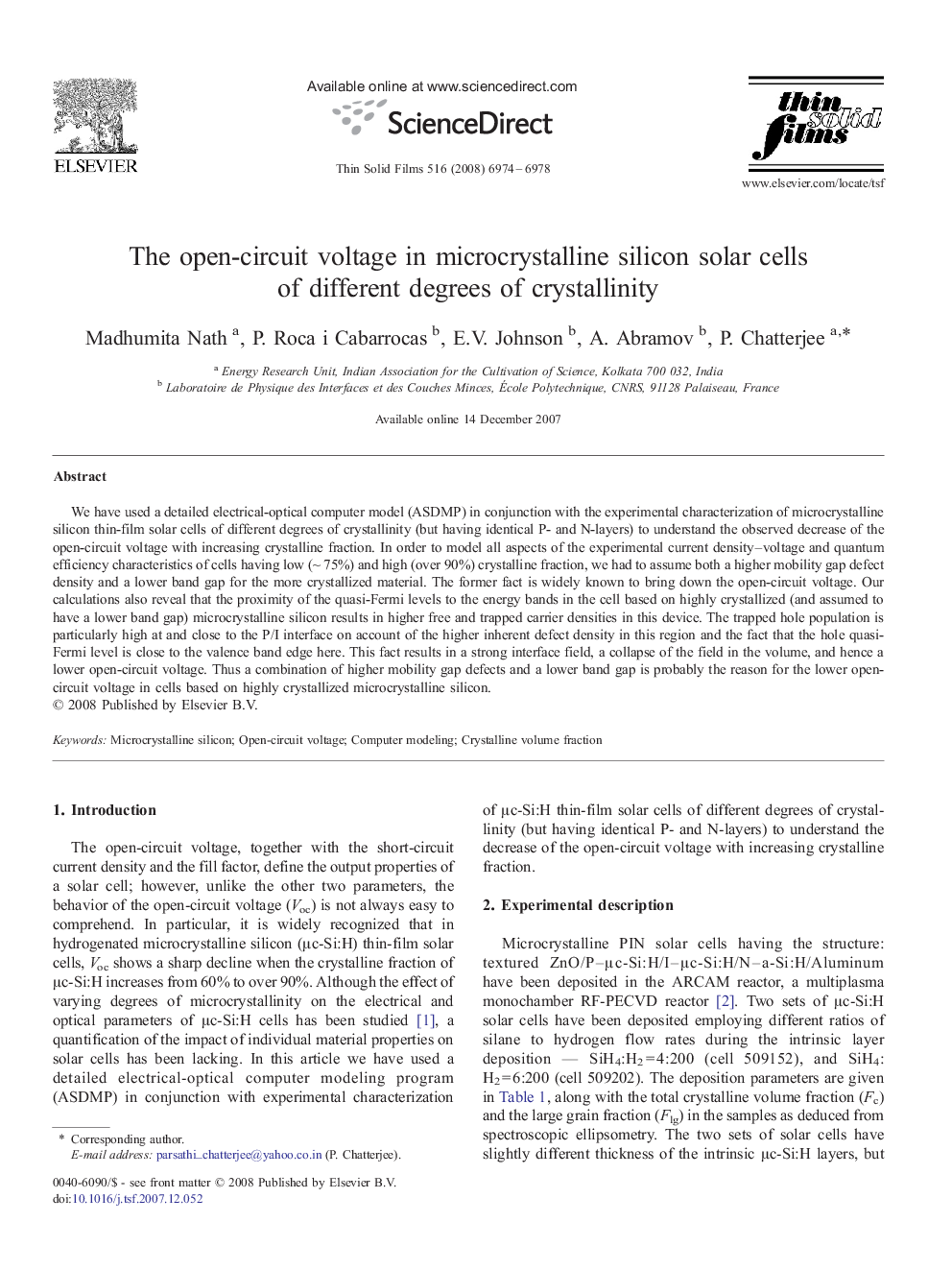| Article ID | Journal | Published Year | Pages | File Type |
|---|---|---|---|---|
| 1674455 | Thin Solid Films | 2008 | 5 Pages |
We have used a detailed electrical-optical computer model (ASDMP) in conjunction with the experimental characterization of microcrystalline silicon thin-film solar cells of different degrees of crystallinity (but having identical P- and N-layers) to understand the observed decrease of the open-circuit voltage with increasing crystalline fraction. In order to model all aspects of the experimental current density–voltage and quantum efficiency characteristics of cells having low (~ 75%) and high (over 90%) crystalline fraction, we had to assume both a higher mobility gap defect density and a lower band gap for the more crystallized material. The former fact is widely known to bring down the open-circuit voltage. Our calculations also reveal that the proximity of the quasi-Fermi levels to the energy bands in the cell based on highly crystallized (and assumed to have a lower band gap) microcrystalline silicon results in higher free and trapped carrier densities in this device. The trapped hole population is particularly high at and close to the P/I interface on account of the higher inherent defect density in this region and the fact that the hole quasi-Fermi level is close to the valence band edge here. This fact results in a strong interface field, a collapse of the field in the volume, and hence a lower open-circuit voltage. Thus a combination of higher mobility gap defects and a lower band gap is probably the reason for the lower open-circuit voltage in cells based on highly crystallized microcrystalline silicon.
